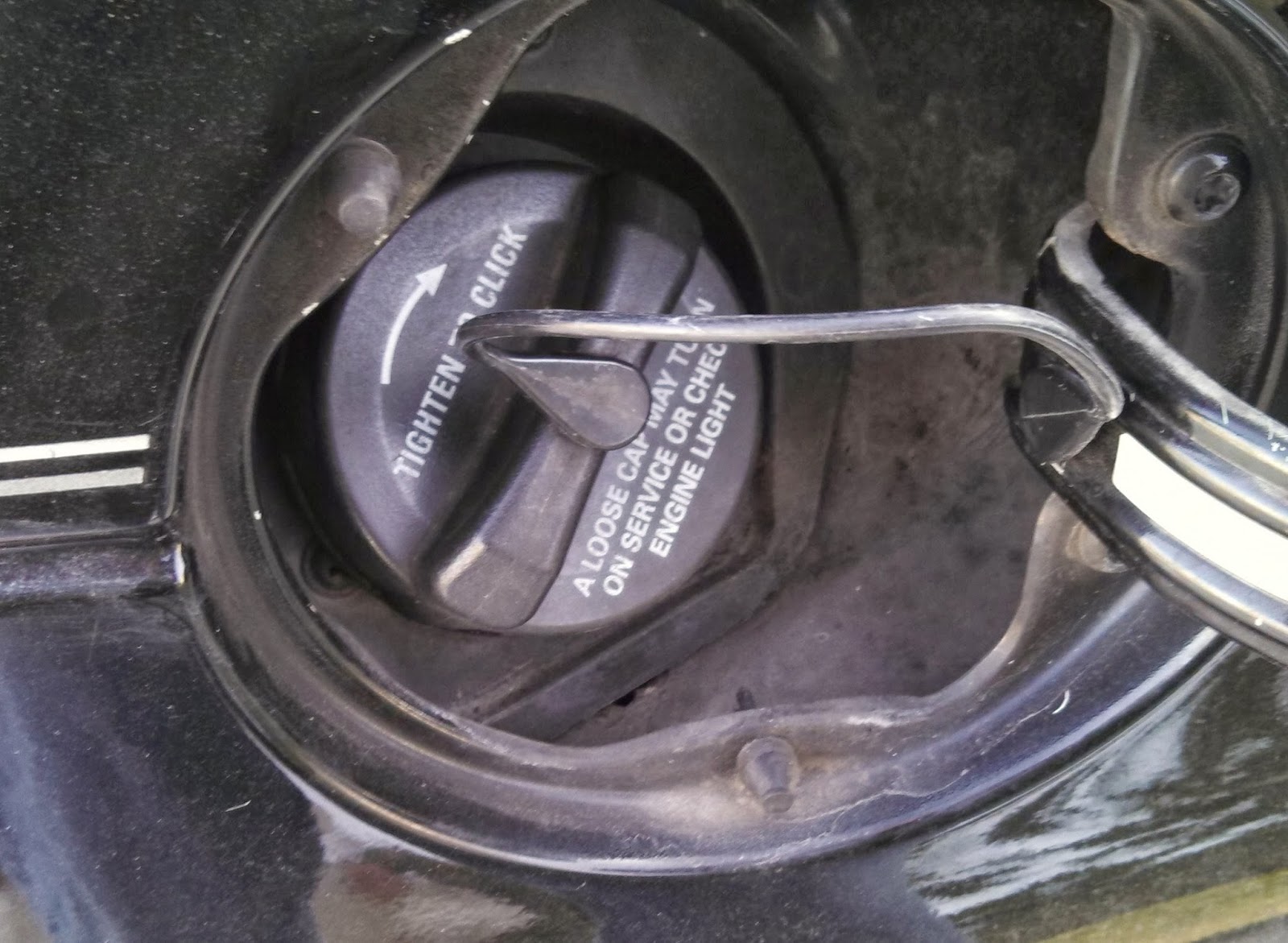That Pesky Check Engine Light: Could it Just be Your Gas Cap?
That little yellow glow on your dashboard – the check engine light – can be a real heart-stopper. It evokes visions of expensive repairs and stranded-by-the-roadside scenarios. But sometimes, the culprit is surprisingly simple and cheap to fix: a faulty gas cap. Could this be the case for you? Let's dive in and find out.
A loose or damaged gas cap can trigger the check engine light because it allows fuel vapors to escape. Your car's evaporative emissions system (EVAP) is designed to capture these vapors and prevent them from polluting the atmosphere. A faulty gas cap compromises this system, and your car's onboard computer senses the leak, illuminating that dreaded light.
This seemingly minor issue has been around since the introduction of stricter emissions regulations in the 1990s. The EVAP system, including the gas cap as a critical component, became a standard feature in vehicles to prevent fuel vapors from escaping into the air. Ensuring a properly sealed gas cap is therefore crucial for both environmental protection and proper vehicle function. A loose gas cap can trigger the check engine light because the system detects a pressure drop indicative of a leak.
Failing to address a check engine light caused by a bad gas cap can have several implications. Besides the obvious annoyance of the glowing light, you could be impacting fuel efficiency due to evaporative losses. Ignoring the issue for an extended period may also damage other components of the EVAP system, leading to more costly repairs down the road.
So, before you rush to the mechanic and brace yourself for a hefty bill, consider this simple check: your gas cap. It's the cheapest and easiest potential fix for a check engine light, and you can do it yourself in seconds.
Checking your gas cap is the first step in diagnosing this issue. Make sure it's tightly secured. Listen for the clicks as you tighten it. Inspect the cap itself for cracks, damage, or a missing seal. If the cap appears damaged, replacing it is a simple and inexpensive solution.
Benefits of addressing a faulty gas cap include avoiding unnecessary mechanic visits, improving fuel economy, and preventing further damage to the EVAP system. For instance, a loose gas cap can waste a significant amount of fuel over time, adding up to extra costs. By simply replacing a damaged cap, you can improve your mileage and save money.
Step-by-Step Guide to Replacing Your Gas Cap:
1. Purchase a new gas cap specifically designed for your car's make and model.
2. Turn off your car's engine.
3. Unscrew the old gas cap.
4. Screw on the new gas cap, listening for the clicks to ensure it's securely fastened.
5. Resetting the check engine light may be necessary after replacing the cap. This can often be done by disconnecting the car battery for a short time, or by using an OBD-II scanner. Consult your owner's manual for specific instructions.
Advantages and Disadvantages of Replacing Gas Cap
| Advantages | Disadvantages |
|---|---|
| Inexpensive fix | May not solve the check engine light if the problem lies elsewhere |
| Easy DIY project | Requires purchasing a new gas cap |
| Improves fuel economy |
Best Practices:
1. Always purchase the correct gas cap for your car model.
2. Check your gas cap regularly for damage.
3. Tighten the cap securely after every fill-up.
4. Don't overtighten the cap, as this can damage the threads.
5. If the check engine light persists after replacing the cap, consult a mechanic.
Frequently Asked Questions:
1. Will a loose gas cap always trigger the check engine light? Not always, but it's a common cause.
2. Can I drive with a loose gas cap? Yes, but it can affect fuel economy and emissions.
3. How much does a new gas cap cost? Typically between $10 and $30.
4. How do I reset the check engine light after replacing the gas cap? This varies by car model; consult your owner's manual.
5. Where can I buy a replacement gas cap? Auto parts stores, online retailers, or dealerships.
6. How often should I replace my gas cap? Replace it if it’s damaged or the seal is worn.
7. Can I use any gas cap? No, use one specifically designed for your car model.
8. What if the light stays on after replacing the cap? There may be another issue; consult a mechanic.
Tips and Tricks: Keep a spare gas cap in your glove compartment for emergencies. Consider marking your new gas cap to differentiate it from others.
In conclusion, a loose, damaged, or missing gas cap is a frequent and easily overlooked cause of a check engine light. This simple fix can save you money and hassle. Replacing a faulty gas cap is a quick, inexpensive DIY task that addresses a potential source of fuel waste and environmental pollution. By taking this proactive step, you're not just extinguishing a warning light; you're taking control of your car's maintenance and contributing to a healthier planet. Don't let a small issue become a big problem. Check your gas cap today!
Queens of speed strength a history of womens olympic athletics
The human body in kaqchikel a cultural and linguistic exploration
Log masuk pinjaman ptptn your gateway to managing your education loan














